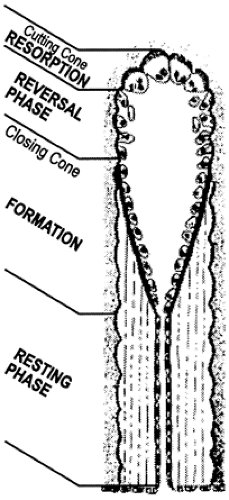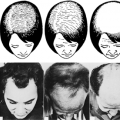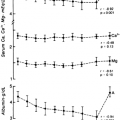MODELING AND REMODELING
Part of “CHAPTER 50 – PHYSIOLOGY OF BONE“
The term modeling refers to the process by which bone grows and alters its shape through resorption and formation at different sites. For example, the long bones enlarge by periosteal formation and endosteal resorption. As they lengthen, the large amount of bone formed at the growth plate is resorbed to maintain a hollow cylindrical structure (Fig. 50-2). The flat bones of
the skull and pelvis grow and change their shape by this process of formation at one site and resorption at another. Modeling can be influenced by mechanical stress. For example, bone mass increases in the most used long bones of athletes by both periosteal and endosteal apposition. Bone formation on one surface and resorption on the other permit teeth to be moved by mechanical forces. Even pressure from soft tissues can produce modeling changes. For example, increased endosteal resorption and periosteal apposition can occur in response to bone marrow hyperplasia.
the skull and pelvis grow and change their shape by this process of formation at one site and resorption at another. Modeling can be influenced by mechanical stress. For example, bone mass increases in the most used long bones of athletes by both periosteal and endosteal apposition. Bone formation on one surface and resorption on the other permit teeth to be moved by mechanical forces. Even pressure from soft tissues can produce modeling changes. For example, increased endosteal resorption and periosteal apposition can occur in response to bone marrow hyperplasia.
 FIGURE 50-2. Modeling during the longitudinal growth of long bones. As the growth plate moves upward (see Fig. 50-1), the wider parts of the bone must be reshaped into a tubular diaphysis. (From Baron R. Anatomy and ultrastructure of bone. In: Primer on the metabolic bone diseases and disorders of bone metabolism, 3rd ed. New York: Raven Press, 1996.)
Stay updated, free articles. Join our Telegram channel
Full access? Get Clinical Tree
 Get Clinical Tree app for offline access
Get Clinical Tree app for offline access

|


